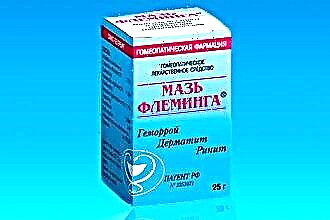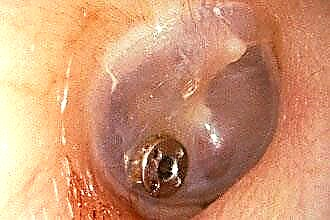All symptoms associated with pregnancy and childbirth in women require special attention, since the life and health of two people depends on the normal course of the process. The most common cause of a burdened somatic history of pregnant women is cardiovascular disease. Hypertensive or ischemic heart disease pose a danger to the normal development of the child and the condition of the mother during childbirth. Therefore, the appearance of unpleasant symptoms from this organ in the postpartum period causes vigilance among doctors.
How caesarean section affects cardiovascular health
Democratic approaches in obstetrics allow the woman to choose the method of delivery herself:
- physiological - through the natural birth canal;
- caesarean section using anesthesia and access to the uterine cavity through an incision in the lower third of the anterior abdominal wall.
However, most often, the operative management of childbirth is prescribed for women with concomitant pathology or a burdened obstetric history (large fetus, narrow pelvis, miscarriage). These factors develop complications in the postoperative period. One of the causes of pain in the heart after surgery is the use of general or epidural anesthesia in obstetric practice.
For general anesthesia, drugs with anesthetic and relaxing effect are used. These substances affect the work of the cardiovascular, respiratory and vasomotor centers of the brain. This action slows down breathing, heart rate and lowers the level of arterial parameters. After coming out of anesthesia due to a sharp rise in pressure, an increase in the load on the heart muscle, its relative insufficiency arises - pain syndrome develops.
In addition, epidural anesthesia carries the risk of high thoracic block - local anesthetic action on the nerve roots of the thoracic spinal nerves. After the weakening of the effect of anesthesia, the sensitivity of the nerve fibers responsible for the innervation of the organs of the chest cavity returns, which often causes discomfort in the region of the heart.
An important element of the effect of a cesarean section on a woman's cardiovascular system is a sharp decrease in intra-abdominal pressure. After the fetus is removed, the pressure in the small pelvis and abdominal cavity decreases and the mechanisms developed during pregnancy disrupt the flow of venous blood to the heart.
Why is there pain in the region of the heart after the procedure?
Carrying out abdominal surgery using anesthetic drugs against the background of anemia in pregnant women exacerbates the symptoms of diseases that are accompanied by pain in the heart:
- hypertonic disease;
- cardiopsychoneurosis;
- ischemic heart disease;
- herpes zoster;
- intercostal neuralgia.
The isolated occurrence of heart pain after cesarean section is associated with a decrease in pressure on the inferior vena cava. During pregnancy, the fetus grows and increases the size of the uterus, which, as it stretches, compresses the vessels lying behind (the abdominal aorta and the inferior vena cava). Due to a prolonged, but insignificant violation of the outflow of venous blood, stagnation develops in the lower extremities with tissue edema and pain when walking, varicose veins occur.
After a sharp (within two minutes) removal of the child from the uterine cavity, the pressure drops and more blood enters the right atrium. The increased preload on the right and left parts of the heart is accompanied by a relative insufficiency of coronary blood flow and the development of angina pectoris. The latter are characterized by:
- high intensity;
- squeezing character;
- lasting up to 15 minutes;
- irradiation to the left arm, shoulder, lower jaw.
The occurrence of such symptoms should not be considered the norm, since in a healthy woman compensation mechanisms are activated that prevent a sharp increase in the blood filling of the vena cava.
Another reason for pain in the heart after childbirth is internal bleeding (with incompetence of the sutures on the uterus or hypotension). The sudden drop in blood pressure due to blood loss raises the heart rate and causes insufficient blood supply to the myocardium.
Observing the woman in labor
Every woman who has had a caesarean section is monitored for three days. During this period, the doctor evaluates:
- the rate of contraction of the uterus;
- the state of the postoperative wound;
- the amount and characteristics of vaginal discharge (lochia).
In the normal course of the postoperative period, the woman is discharged from the hospital. If the somatic or obstetric history is aggravated and heart pain occurs after childbirth, longer observation of the woman in labor in the hospital is recommended.
To diagnose and select adequate therapy, the doctor collects the patient's life history, asks about similar symptoms from relatives, concomitant diseases. In addition, such studies are carried out:
- monitoring of the electrocardiogram;
- measurement of blood pressure - due to a sharp increase in hypertension or a decrease in bleeding, pain occurs behind the sternum;
- ultrasound examination of the heart and pelvic organs (to diagnose internal bleeding or impaired myocardial contractile function).
In order to timely recover after surgery and return to a normal rhythm of life, women in labor are recommended to moderate physical activity from the first day (walking in the ward).
Conclusions
The onset of pain in the region of the heart in women at the end of the caesarean section is a frequent sign of exacerbation of concomitant cardiovascular disease. The appearance of this symptom requires special attention, since the mechanisms of compensation and adaptation after pregnancy are depleted in women in labor. Patients with such complaints are in the hospital of the maternity hospital under the supervision of specialists to make a diagnosis and prescribe an effective treatment.



